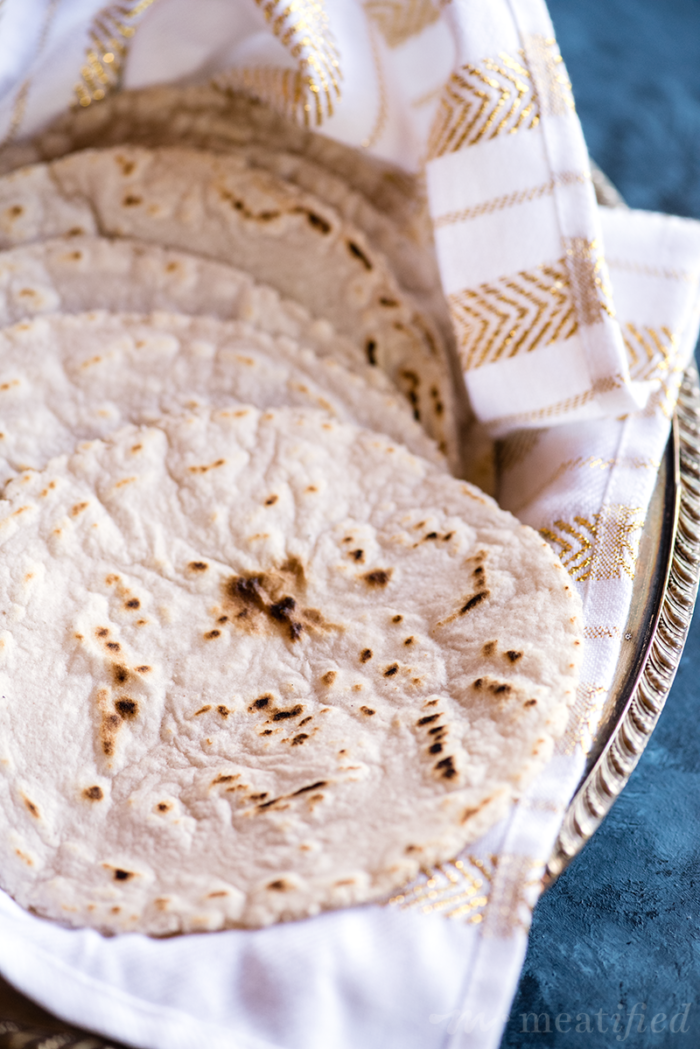
This recipe for foolproof grain free tortillas is brought to you by my deeply ingrained perfectionist tendencies. There are plenty of recipes out there for cassava flour tortillas, but I wanted to base my first foray into grain free flour territory on a simple, traditional recipe. You wouldn’t think that a recipe as simple as flour + fat + water would need much testing, but in reality I ended up making in excess of ten test batches. Yes, ten.
I did this because I frequently came across discussions about how cassava flour tortilla doughs were too dry or crumbly, which meant people were adding lots of extra water to existing recipes. And it was easy to see why! Although you’ll often see companies claim that cassava flour can be exchanged one for one for wheat flour in many recipes, I found it was really dry and ate up plenty of moisture.

So after much tweaking and testing, I found that I had to add two thirds the amount of water again than the classic wheat based recipe I used as a starting point! I also had to increase the fat by about 50% to hit the sweet spot between soft & pliable and heavy & greasy.
Originally, my assumption was that more fat would be the answer to making pliable grain free tortillas, but I found that adding extra fat without balancing out the ratio of fat to water yielded a greasy feeling tortilla. They didn’t taste too bad, although they were visibly greasy to the touch, leaving oil behind on your hands when you picked them up. But the real kicker was that those fat-heavy tortillas didn’t survive storage and couldn’t reheat at all. Instead of crisping up, they just became progressively greasier and softer when you attempted to reheat them.
Instead of heat helping that crisping along, it released the fat from the dough, leaving behind an oily skillet and a tortilla that finally succumbed to limpness and inedibility.

So understandably, I’m pretty proud of these humble looking grain free tortillas! I dubbed them “foolproof” since it’s such a simple recipe:
- no leaveners are needed
- comes together in a food processor in seconds
- needs minimal kneading
- makes perfect tortillas every time
I’ve given you both sets of measurements for this recipe, American cups & volume measurements vs metric weights. If at all possible, I highly, highly recommend you use an inexpensive digital kitchen scale to measure your ingredients. I’m not saying that to sling some scales, although I won’t complain if you do go out and buy a set now.
(When I first moved to the States, I was utterly baffled by the concept of cups. These days I’m confident in using them, but… honestly, I still think the whole system of volume measurements is Spock-annoying level illogical.)
It’s just that weight is so much more accurate than volume measurements, which is so, so important when you’re working with flour of any kind. I have tested this out in my own kitchen: most tablespoon measures are a little short and each time you measure out oil, there’s always a little left behind in the spoon.
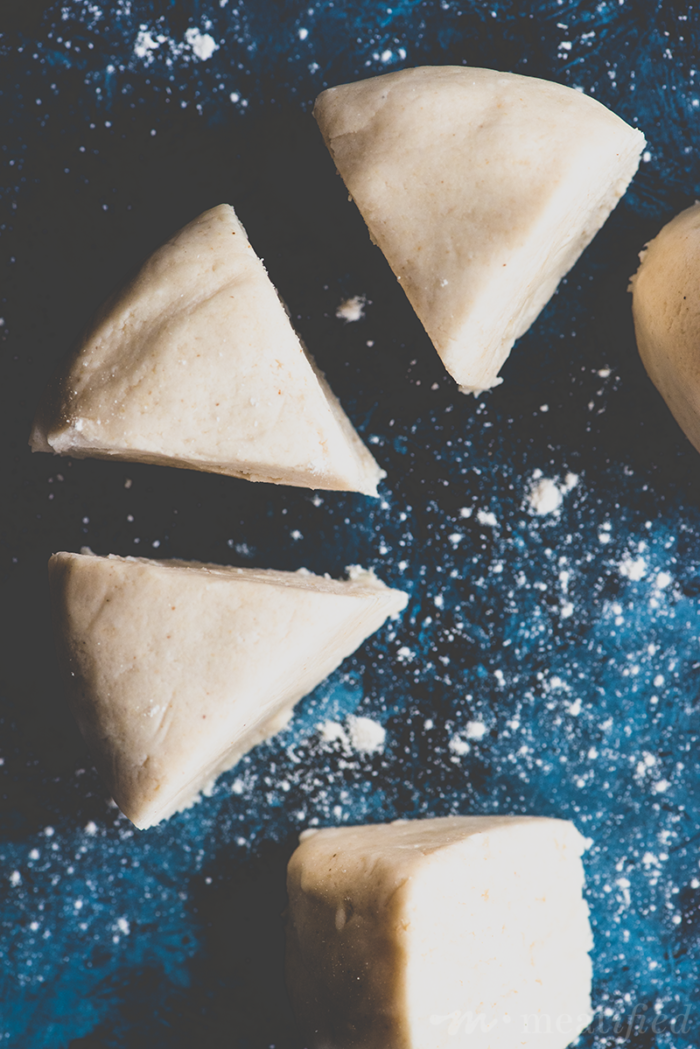
This means that, cumulatively, each subsequent tablespoon you measure out compounds and furthers the error. As an example, when I measured out 6 tablespoons (90 ml) of avocado oil, the amount that made it into the bowl was 5 tablespoons (75 ml). That’s a whole tablespoon short, meaning my recipe was 17% short and I had no freaking idea.
So if you have a scale, pretty please use it, ok? Me and my comments section thank you in advance!
If you don’t have a scale, you’ll want to scoop and level off your flour with a knife to be most accurate. Measure out the oil as a half cup and then two tablespoons rather than 10 tablespoons in a row. That will minimize any inaccuracies as far as possible, but bear in mind that it’s just not going to be as precise as using a scale and may affect the outcome.
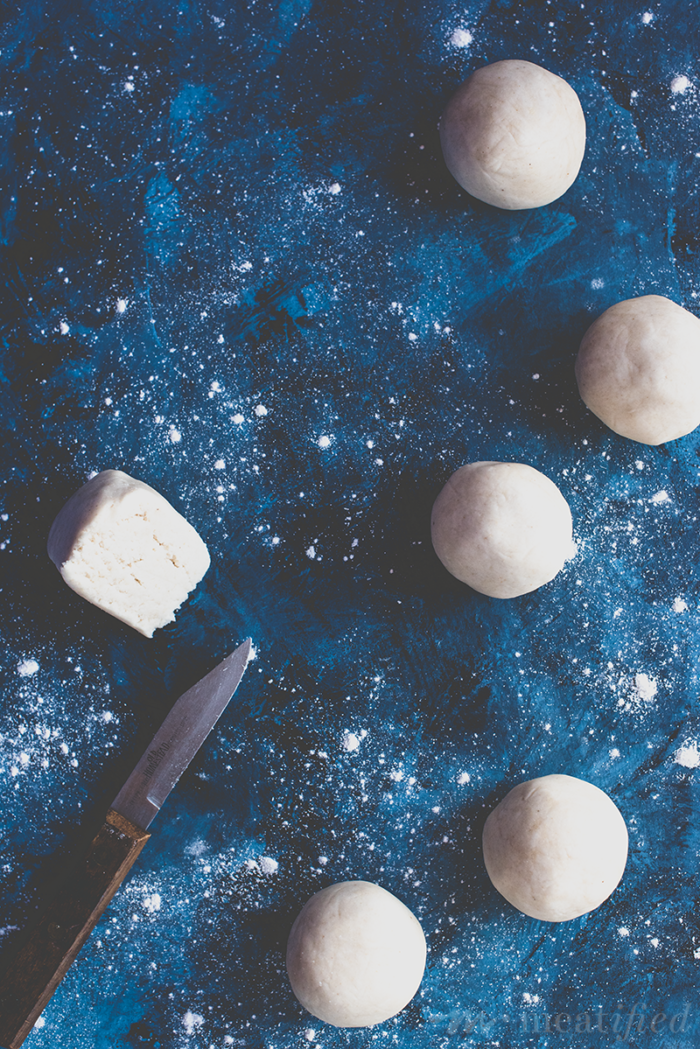
You’d think I’d be happy to stop recipe testing these grain free tortillas after batch number nine or so. But, nope. I wanted to find out if swapping out the oil or fat used in the dough would make any difference. So I’ve given you a choice of three different cooking fats as options here: avocado oil, organic pork lard and palm shortening.
All of them will work to create tasty grain free tortillas, but the choice you make will affect how the dough behaves and how it cooks, too. I’ve outlined the differences and my observations from many, many, maaaaaaany test batches below! (Did I mention that whole perfectionist thing? Yeesh).
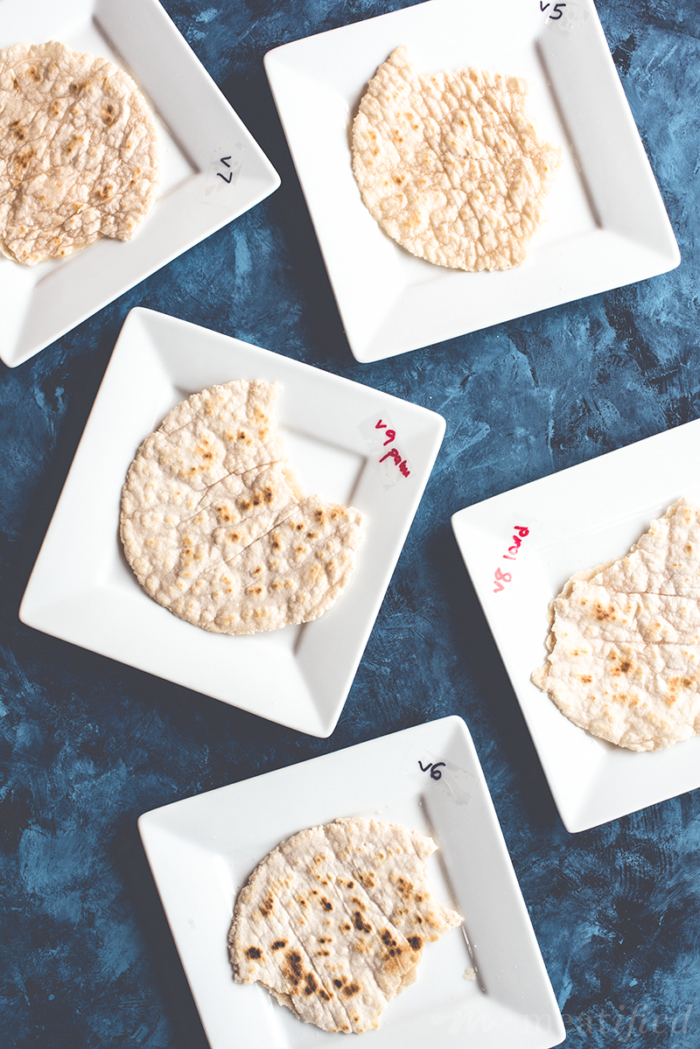
Grain Free Tortillas Using Avocado Oil
- easiest, smoothest dough to handle
- neutral flavor, needs more salt
- best pliability if you want to roll or fold tortillas
- dough bubbles up evenly as it cooks
- a little more gummy / chewy
- slightly translucent appearance (see below)
Summary: the easiest dough to work with, a little bland.
Grain Free Tortillas Using Lard
- dough is a little drier & edges may need smoothing when pressed
- best flavor, especially for savory dishes and toppings
- need less salt
- have more of a flaky texture & greater contrast between crisp outside & fluffy middle
- will fold for tacos but less likely to roll without cracking
- bubbles when cooking much smaller, along the edges
- looks like the real thing
Summary: best flavor, but a little harder to work with.
Grain Free Tortillas Using Palm Shortening
- less crumbly dough than lard
- least pliable once cooked
- more of a chewy texture
- bubbles less than avocado oil tortillas
Summary: wouldn’t use if another option were available.
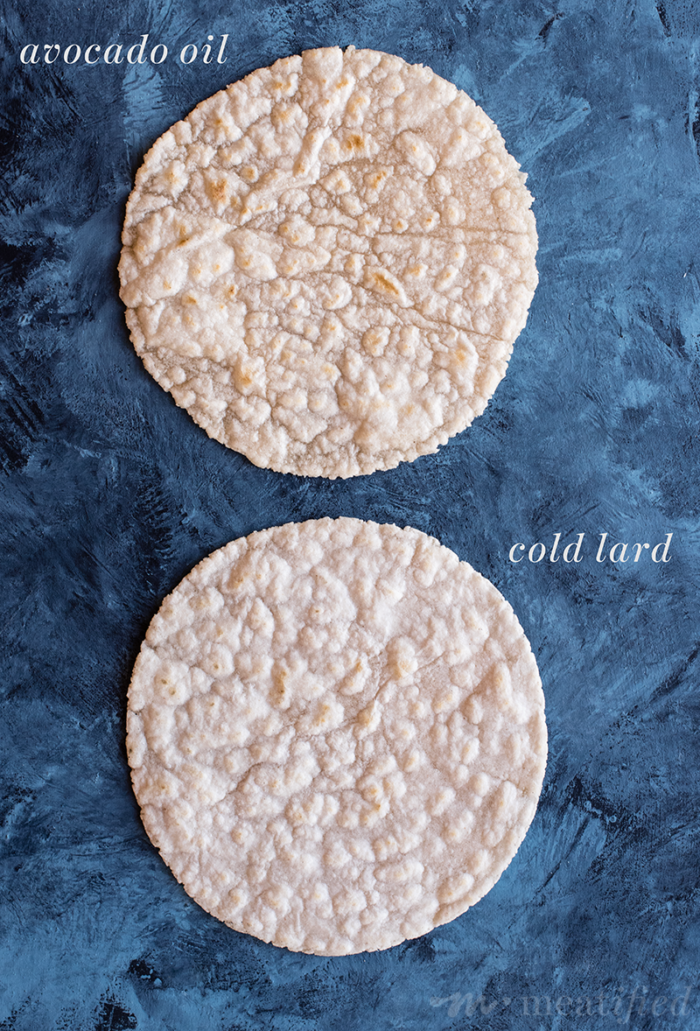
In terms of taste and texture, the lard wins out, hands down. It yields a grain free tortilla that is crispy on the outside and fluffier at its center. All three fats – organic pork lard, avocado oil and palm shortening – work but the feel and savory scent of the lard-based tortilla recipe set it apart. You’ll notice in this photo above that the avocado oil tortilla looks very slightly different. I’ve undercooked them both just a touch so that you can see the difference more clearly.
Whereas the lard tortilla looks like a white wheat flour tortilla, you’ll notice that there are almost translucent patches on the avocado oil tortilla. Using a liquid oil seems to be the cause of this and that translucency is a visual flag for the slightly gummier, chewier consistency of the avocado oil tortilla’s middle.
Although the lard dough is a little harder to work because it’s very slightly drier, I recommend you use lard for the best consistency, texture and taste.
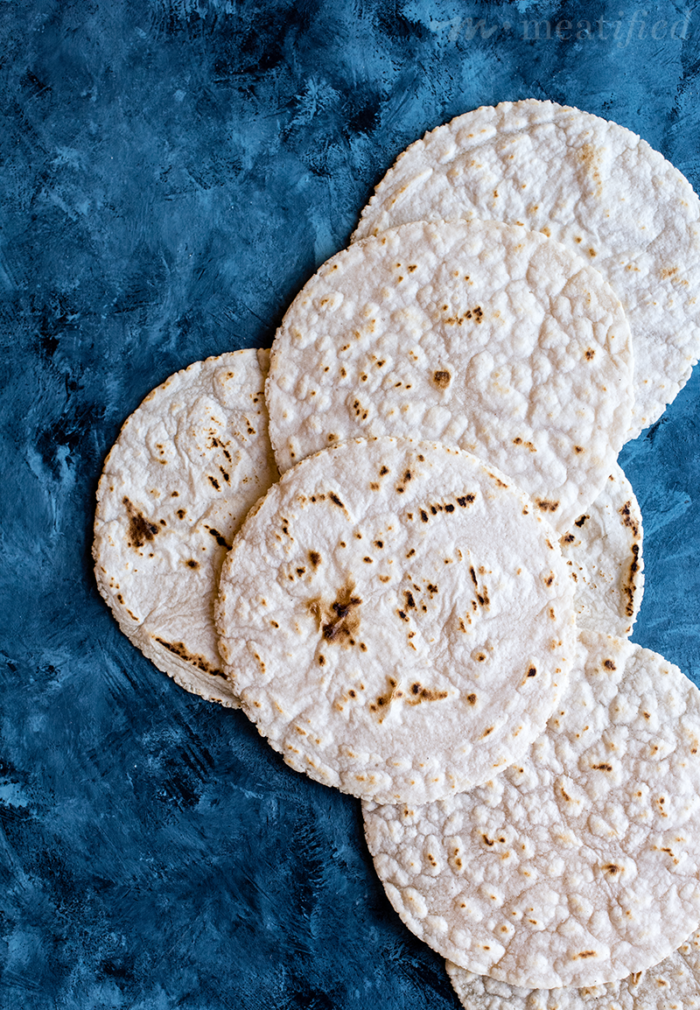
You can make your dough by hand if you like, working the fat into the flour in a bowl, then adding the water a little at a time to knead together a dough. I find the quickest and easiest way is to throw all the ingredients together in a food processor. This six tortilla sized batch actually works perfectly in my mini food processor, even though it doesn’t look like it will at first!
I measure all my ingredients straight into the bowl (with the blade covering the hole) using my digital scale, so it takes just seconds to bring the dough together. All you need to do is pulse the flour, fat and salt together, then pour in the water and blend to combine everything together. After that, it’s easy to tip the dough onto a clean surface (don’t add any flour!) and work it together into a smooth, pliable dough.
The easiest way to form these tortillas is to use, wait for it… a tortilla press. Usually, I’m pretty anti uni-taskers in the kitchen, but this thing is simply heaven sent if you want to make tortillas on the regular. You can roll them out by hand between two pieces of parchment paper, but frankly, that’s a complete pain in the… you get my point. Bonus points: a tortilla press makes it so much easier to make tostones, too.
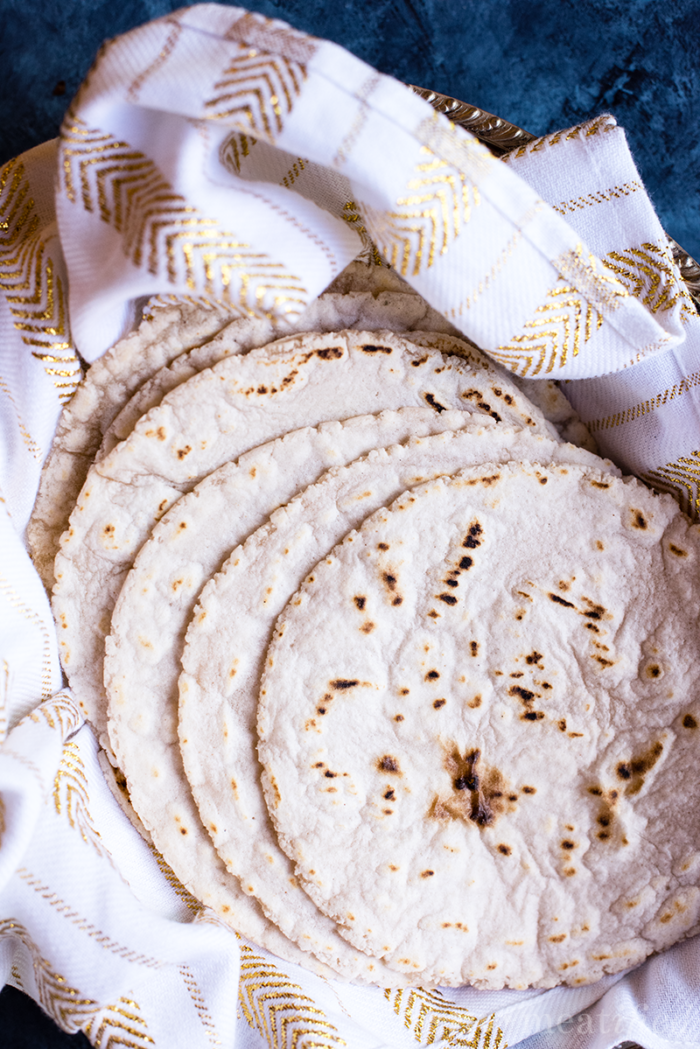
A little tip: when working with a lard based dough, the tortillas are more prone to crack at the edges. For a smooth, round tortilla shape, I find it best to press the dough more than once. First, I press the tortilla about half way into a three or four inch round. Then I use the curve of my fingers to press any rough, ragged edges into a smooth circle. Then I press the tortilla a second time to get a nice, evenly rounded shape with neat edges. Of course, all of that is just for the sake of appearances, so if you don’t mind a messier edge, you can just press ’em as normal, if you like.
Once the tortillas have been cooked quickly in a hot, dry skillet, I like to rest them on a clean cloth rather than putting them straight on a plate. This way, they won’t go soggy by sitting in their own steam as they cool slightly.
I have to say it: these are not your average grocery store tortillas. Just like the real thing, they are best enjoyed fresh, although you can reheat them gently in a dry skillet. You can store leftover tortillas in an airtight container or in a freezer bag, but be aware that they will soften in plastic and lose some of their texture. Stored tortillas will be more chewy and the flavor of the cassava flour will come through more strongly, too.
Once they are reheated, they are not as pliable as the original tortillas and are probably closer to a flatbread texture than a tortilla. Again, the lard tortillas fare the best being made ahead and reheated.
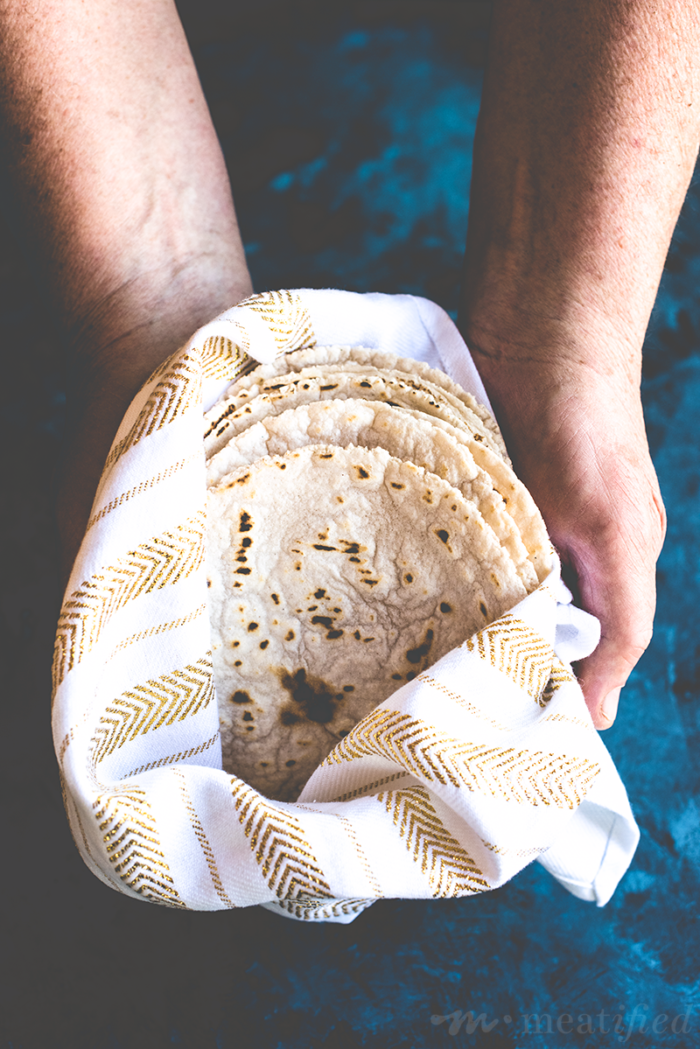
Although I’ve tested this recipe over ten times, I used the same brand of cassava flour throughout. I can’t guarantee the results if you use a different cassava flour, since I’ve heard that other brands aren’t as finely ground or can be more gritty or chewy in texture.
Wanna make some tacos? Check out my Chicken Salsa Verde Tacos with Lime Pickled Onions!
PrintFoolproof Grain Free Tortillas
Adapted to be grain free from this Serious Eats recipe.
- Prep Time: 10 mins
- Cook Time: 10 mins
- Total Time: 20 mins
- Yield: 6 6 inch tortillas 1x
Ingredients
- 1 cup / 165 g cassava flour
- 3 tbsp / 45 ml cold organic pork lard, palm shortening or avocado oil (I recommend lard)
- 1/4 – 1/2 tsp fine sea salt
- 1/2 cup + 2 tbsp / 150 ml cold water
Instructions
- COMBINE: Add the flour, fat and salt to the bowl of a food processor. I like to use the smaller amount of salt if using lard as the fat, and the larger amount when using avocado oil or palm shortening. A 4 cup sized mini food processor is large enough for this sized batch, even though it doesn’t look like it! Pulse – with your hand over the holes in the lid if using a mini food processor – until the flour mixture resembles very fine crumbles. Add the water to the bowl and process until everything combines into an even looking dough.
- DIVIDE: Scrape your mixture out of the bowl and onto a clean work surface (no need to add any extra flour) and use your hands to work it together into a smooth, pliable dough. Lard will make for a very slightly drier dough, but that’s ok. Divide your dough into six evenly sized portions — I recommend using a digital kitchen scale for this if you have one. Roll each into a ball and flatten the top into a disk.
- PRESS: Preheat a dry 12 inch cast iron skillet over medium heat. Cut two pieces of parchment paper to fit the width of an 8″ tortilla press. Place the first piece of parchment on the bottom of the press, then put a disk of dough on top, slightly off center. Place the second piece of parchment on top, then press the dough into a six inch round tortilla (see notes). Peel off the top piece of parchment and set aside to reuse.
- COOK: Make sure your skillet is very hot by splashing a few drops of water in the bottom. If they sizzle, you’re good to go. Hold the tortilla, parchment paper side down in one hand then gently flip it over into your other hand. Carefully peel off the parchment paper (saving it to line the press again later) and add the tortilla to the hot skillet. You should hear it sizzle slightly. Cook until you start to see a few air bubbles forming in the dough at the edges and the dough starts to pull away slightly from the skillet at the edges, about 30 – 60 seconds. When there are some golden brown or even slightly charred spots on the bottom of the tortilla, you’ll know that it’s ready to flip over. Use a spatula to flip the tortilla and to cook the other side until it too has a few golden spots, anything from 10 – 30 seconds. Transfer the cooked tortilla to a plate covered in a clean cloth to allow the steam to dissipate and keep the underside of the tortillas crisp.
- REPEAT: Follow the “press” and “cook” steps above until all of the dough has been cooked and you have six tortillas in total. Note that the cooking times for each tortilla will vary slightly: the longer your skillet is on the heat, the less time each tortilla will take, so watch for doneness as described above rather than depending on an exact cooking time. Remember that the second side will not take as long as the first. Make sure to flip your tortillas and remove them from the heat as soon as they are done, as the longer you leave them on the heat, the less pliable they will become when cooled.
- MAKE AHEAD: If you want to press the tortillas all at once and then cook them, stack them with parchment paper beneath and between each one so that you can peel, drop and cook them easily. They’re too thin and fragile once pressed to hold their shape on their own and so will tend to stick to plates or surfaces and break when you attempt to pick them up. If you want to make the dough ahead of time, you can form it into balls and place it in a bowl covered with saran wrap in the fridge. I wouldn’t recommend doing this for more than 30 minutes to an hour or so, though, as the dough will eventually dry out.
- STORE: Keep the cooked tortillas in an airtight container or plastic bag. They will become much softer once they’ve been stored overnight and I recommend that you reheat them in a warm skillet rather than eating them cold once they’ve been kept that way, since they lose their texture. Reheated, they will be slightly more chewy and less crisp or flaky. Additionally, the flavor of the cassava flour will come through a little more strongly once reheated.
Notes
If you can, please consider using an inexpensive digital scale to measure your ingredients for this recipe. Volume measurements like tablespoons and cups can vary greatly, which is not ideal for any kind of bread or baking!
This recipe was tested solely with Otto’s Cassava Flour – results may differ across brands since they have different levels of moisture absorption.
When working with a lard based dough, the tortillas are more prone to crack at the edges. For a smooth, round tortilla shape, I find it best to press the dough more than once. First, I press the tortilla about half way into a three or four inch round. Then I use the curve of my fingers to press any rough, ragged edges into a smooth circle. Then I press the tortilla a second time to get a nice, evenly rounded shape with neat edges.
You may also find it helpful to rotate the tortilla around 180 degrees before pressing a second time to get a more even thickness on the tortilla. The tortilla press tends to put more pressure on the side nearest the hinge, which can make that side slightly thinner.
This recipe was included in the Paleo AIP Recipe Roundtable.

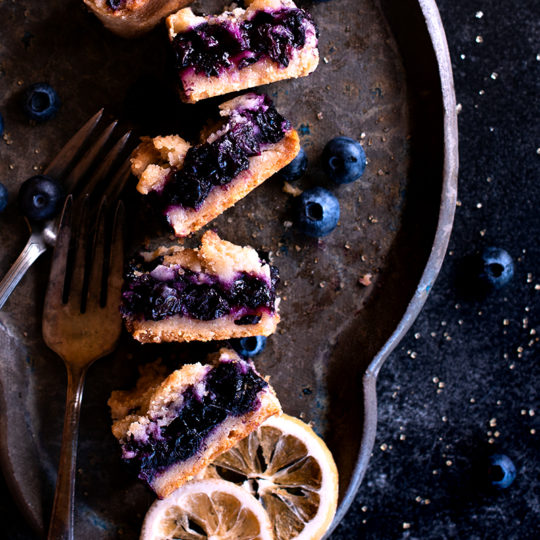
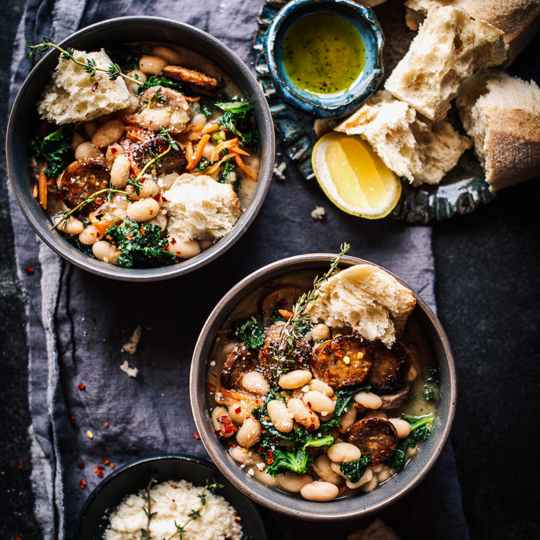

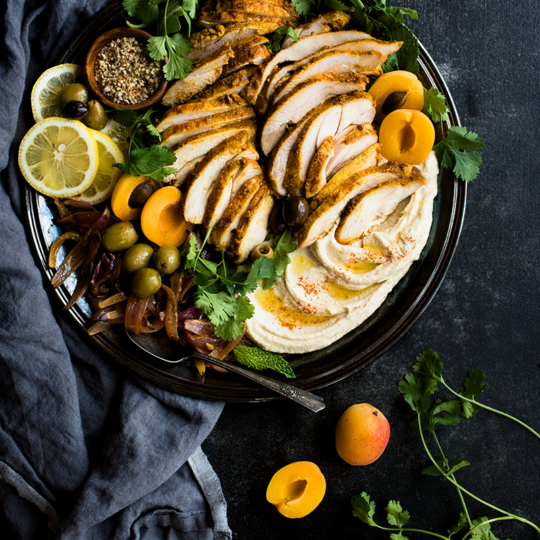

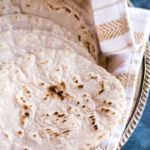










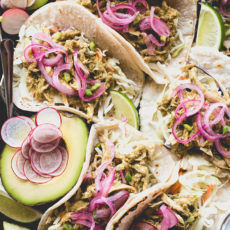
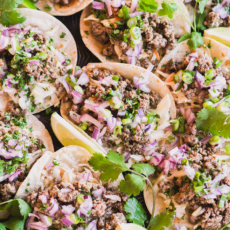
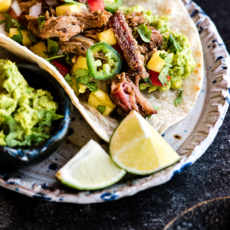
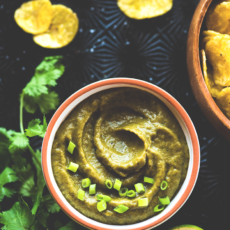
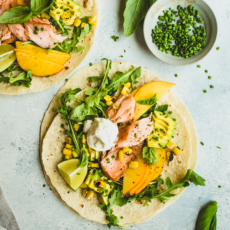
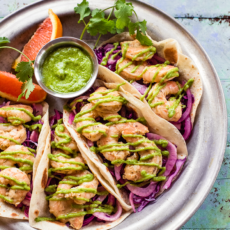










I wish I had cassava flour right now, I’d be all over this, it looks DELICIOUS 😍
They’re dangerously good! My husband is now badgering me for tacos daily 😂
Thank you! I think I love you! I have cassava flour and have tried many times to make a good paleo tortilla. They are never great but I am so desperate I eat them anyway. I am trying yours first thing tomorrow. I have beef fat. Will that work as well as pork lard? Also, what brand of cassava flour do you recommend. I didn’t see it listed above. Thank you so much.
Hi Lori, I think tallow would work well here! The best results seem to come from a solid, chilled animal fat over a liquid oil for some reason. I tested all my batches using Otto’s Natural, I linked to it within the ingredients list of the recipe. Hope that helps!
Looks amazing!! Can’t wait to make these with my homemade pork lard!! Thanks
Oh wow, homemade lard will be extra delicious!
Can these be frozen? Looking for vacation ideas
Can’t wait to try these! Thanks for giving us some fat options when making them. I really like how you explain the differences. LOVE YOUR RECIPES they are the best!
Thank you so much, Cherene! I appreciate your kind words because this post was a labor of
obsessionlove 😂This recipe was worth the wait! Thanks Rach! Gonna try it as soon as I get some cassava flour. Never used it before. I have Tapioca Flour. Any chance you used it in any of your experiments?
I’m playing around with incorporating it into some other bread type recipes, but it’s really just a straight up starch rather than a true flour, so I believe it works best as either a thickener or as a component of baked goods in with a blend of other flour(s).
It tastes AMAZING! But I’m having trouble getting them off the parchment paper in one piece. I have to play with the amounts I use. The thicker my tortilla, the easier it comes off the parchment. Thanks for this! Tacos for dinner tonight!!!
Are they sticking to the paper, or breaking? I find they’re more liable to break if the parchment gets a fold or crease in it, which can happen after a few uses. You might need to peel the parchment off in two different directions if that happens, first from one side, then the other so that the tortilla doesn’t break along the fold. I think it may be a matter of practice, since I had one or two break on me in the beginning, but after making so many, it doesn’t seem to be a problem for me now! Like you say, you can make them a little thicker to make them easier to handle, but the trade off is a slightly doughier tortilla. Out of curiosity, did you weigh out your ingredients, or measure them by volume?
By volume. I looked into a digital scale, but I would really only be using it for this recipe, so I decided to go without. But I did invest in a nice cast iron tortilla press!
Those presses are great for making tostones, too!
Place the tortilla and parchment paper in the skillet for a few seconds, the heat dries out the dough just enough to release the tortilla from the paper. I did this successfully with a very sticky recipe not this one but it should work.
Did you try a mixture of avocado oil and lard?
I haven’t, but I’m sure it would work out just fine!
I’m definitely going to try this! I can’t get my Mexican half off gmo corn! Anything ‘better’ for you, he rejects.
Questions-
Can I use a vitamix to mix the dough? I’ve never made a dough, ever.
Can I use lard, the fresh bacon (no preservatives etc) lard that I collected after baking bacon a few times?
Thanks!
Honestly, I think the vitamix might be overkill! It’s so powerful, it would perhaps overmix the dough and as its so dense, you may have trouble getting it out from the blender container. It might be easiest just to mix the fat and flour together by hand or with a fork in a bowl, then use your hands to work in the water and form the dough. You could use bacon fat, but it will likely have a stronger flavor than rendered lard, so the resulting tortilla will definitely end up bacon scented!
Oh yes, thanks!
I was wondering the same thing. Glad I decided to look through the comments. I don’t have a food processor, but I might still buy one for some other recipes.
I tried these yesterday using avocado oil and I got 4 of 6 as the tortilla would stick to my hand when trying to flip it into the pan. I can wreak even a fool proof recipe. Any thoughts on where I went wrong? I used the last of my Ottos plus another brand of cassava. Also, I skipped the scale … Maybe I used a bit too much oil or didn’t knead the dough enough. As easy as the recipe is I am up for another go. I will try tallow for some added flavor since I don’t have lard. The food processor worked great using the small bowl. Thanks for a great tutorial!
Hmm, they shouldn’t be particularly sticky once pressed, but perhaps that could be the result of a little extra oil and the different flour you used. I can’t know for sure because I’ve only ever made these with the same one brand of cassava flour. How did you measure out the oil? The dough doesn’t need much kneading to come together, so I don’t think that’s likely to be the problem.
It could just be that you need to peel and flip them just a little faster, so that the tortilla dough doesn’t spend too long in your hand, which is just a case of a bit of practice 🙂 The heat of your hand could be enough to release a little of the oil from the dough and for the pressed dough to mold to your palm a little, making it stick. You want to peel off the parchment and then flip the tortilla straight from your hand into the pan without too much delay. You could also try making them just a little thicker at first, because that makes them easier to handle than when the dough is very thin.
Thank you so much for your obsession!!! These really are perfect flour tortilla replacements! I’ve been making the tortillas off the back of the Otto’s bag for a while now and prefer the taste and texture of these lard-based ones much better. To gild the lily a bit, I used wild boar lard from fatworks and omg……..
One thing that may help those who have sticking problems transferring the pressed dough to the pan is to use two small-ish squares of parchment paper during the press, peel off the top sheet, place the pressed dough in the preheated pan with the parchment still on (dough-side down), wait for 30-45 seconds, then peel off the parchment square before flipping. I’ve never had a sticking or tearing problem doing it this way.
I also found that I much prefer the texture with 8 tortillas to a batch instead of 6. They’re just a bit thinner and flakier that way.
Thank you again! I’m so happy to have this perfect tortilla substitute in my repertoire! AIP-Mexican is back!!
Oooh, you’re gettin’ fancy with your boar lard! I honestly never have sticking issues, but I’ve also made these so many times that it’s probably all that practice that does it — thank you for your tips! When you’re dividing the dough into 8, are you still making 6 inch-ish tortillas, or are they a little smaller? I’m curious! Thinner would definitely be better in terms of lightness and probably make for a little less chew, too. Did you see my taco recipe a while back? It uses my AIP salsa verde and it makes for a real fun taco dinner!
Yep-they’re still the same size (5-6 inch). I finally whipped up a batch of your salsa verde using the grill to get that lovely charred taste, garlic scapes instead of a head of garlic, both red and white green onions and a handful of non-charred green onions to round out the flavors. Really, really, really good!
Thanks, Rach! Another winner! This is similar to the tortilla recipe I’ve been using, but your recipe turned out much more pliable and better for taco night. Easier to make too! Both due to the fact that you gave us weights! Yay! This goes in the file as our new staple tortilla recipe.
Yay, so glad you’re enjoying them! I’ve been given weights for recipes since I did my book back in 2014, but for baking it really does make all the difference. I wish people weren’t so intimidated by weights rather than volume, because they’re so much more accurate, so much more reliable, too.
Not a question regarding the recipe, but the tools. What kind of skillet do you use for these?
Good question, I see I specified that in the recipe, but not the actual post! I used a dry cast iron skillet, but I can’t imagine it makes too much of a difference. My guess would be they might brown a little faster and more evenly in cast iron because of the way it retains heat, but it would likely work just fine on the surface of your choosing. Just make sure to flip them once they brown as described 🙂
These worked beautifully and were so delicious. If I had no self-control I would have eaten the whole batch by myself in one sitting. 🙂 It’s been awhile since I’ve enjoyed tortillas. My children loved them and are begging for more. Thank you for another simple, loved-by-the-whole-family AIP recipe.
I’m so glad you all enjoyed them! And I hear you, totally. I’ve never had much of a sweet tooth, but I was always a raging starchy carb fiend before I went grain free and I had to rein myself in when I got these right because it had been so long since I’d had something like a tortilla!
Love these! I have made many grain free tortilla recipes but none seemed to come close to the real thing. What I loved about this recipe is the texture of the dough. I knew right away that it was going to make great tortillas. The only problem is that I eat them too fast. Going to double the recipe next time.
Thank you so much, Lisa, I’m so thrilled to hear that you love them! I worked pretty hard on testing these out thoroughly, so it’s lovely to hear that they were a success for you!
The recipe doubles easily. It has become a weekly routine to make a batch. I can use them for a breakfast burrito on the go. A quick meal of left overs. Today I was craving that cinnamon roll taste so I mixed a little butter, cinnamon, and coconut sugar together, warmed the tortilla in a pan, spread it out and voila! Craving ended….. this could be dangerous. If you don’t do butter (the only dairy I do) then you could easily use shortening in the mix.
Honestly, that DOES sound dangerously delicious! So glad you’re enjoying them 🙂
Would ghee work and if so, add it cold or melted?
Thank you for the Egg free recipe!!
Sorry I missed this comment until now! I don’t see why it wouldn’t work and I’d probably try it cold, first 🙂
I’ve been making these for over 6 months. They are wonderful and easy to make. I’ve also found away to use them in different ways. If you toast them up quickly and toss them with a little coconut sugar and cinnamon nor dizzle them with honey. Tonight I fried them in avocado oil for crispy chips. Next time I think I’ll roll them out thinner so the chips can be even crispier.
It makes me so happy to hear that you’ve been enjoying these so! I keep meaning to post a chips version of these myself… but to be honest, we just eat them all before I ever get around to taking photos, ha! I love the cinnamon honey idea 🙂
Just made these using avocado oil and I’m absolutely in love with these. I added some tumeric to the dough and would probably sub a tbsp or 2 of the water for lemom juice next time, but they amazing!!!!!
That sounds like a lovely variation!
I grew up in Germany, and we use a scale for cooking, of course. However, I have never seen a scale that does milliliters. Mine has grams and kilograms, ounces and pounds.
How do you do it?
Hi Gudrun, I actually grew up in the UK, so I had to learn US units and measurements here, which took a while to get used to! My scale does have mL and with these fats / oils the mL amount is the same as grams, so you can just measure out the equivalent amount of grams on your scale. All the best!
I have tried several different recipes and this is a keeper! The tips were so helpful in getting the parchment paper to remove from the tortilla. In general, the dough just was easier to work with. I used the Avocado oil. My only concern is they were not pliable, I think keeping the heat in helps them to soften so next time I will let cool only a short time before placing them in my tortilla keeper. Thanks for sharing this recipe with us!
Thank you for your feedback, Melissa, I’m glad you enjoyed them. I think I would pop them straight into your tortilla keeper because retaining the moisture in the tortillas will help keep them pliable. I know that they do become more stiff if they are left out uncovered and conversely need a quick reheat if they’ve been stored too long in plastic and gotten soft. Hope that helps!
Can any other type of flour be used to make these? Coconut or almond?
You really can’t sub either of those flours for cassava, they’re just too different. Coconut and almond flour are both far too dry and won’t hold together the way that cassava flour here does, I’m afraid.
These are better than regular tortillas – seriously! My family devoured them. Like another commenter above, I had considerable trouble peeling them off the parchment paper and they were reasonably thick already. I added at least as much flour more on the board as the recipe called for to make it work. They still had great texture as the dough was very sticky. I used Palm Shortening. Next time I think I will chill the dough briefly before rolling into the tortillas. Is there any reason not to do this in your experience? Ultimately, I just rolled them out and peeled off one side of parchment – then took the spatula and gently lifted the tortilla off the other side of the parchment bit by bit. Honestly these were well worth the time to make them – absolutely delicious!!
Just made these last night. Easy and yummy! This will save me so much money and give me so much more flexibility. Now I don’t have to run to Sprouts and buy expensive premade Cassava tortillas, I can make them quickly right at home! Thanks for all your hard work developing this recipe. Even my husband liked them!
I’ve made cassava flour tortillas quite a few times but thought I’d try a new recipe. This was awful. I used a scale to measure, and even though I didn’t add all the water they were a strange not liquid not solid form that I couldn’t possibly knead or roll out. I ended up pouring batter into the skillet, which worked out. But they were SO GREASY! We sadly did not enjoy these very chewy and greasy tortillas. Maybe I missed something!
I’ve made this recipe so many times and never have that happen, but I’m 98% sure that you either didn’t use cold fat or you over-processed the dough past the described texture. I’ve had something similar happen when making a cassava flour & palm shortening based pastry recipe – if the fat isn’t chilled and / or over-processed, instead of getting clumps of fat suspended in the cassava + water dough, you get a frosting-esque texture that, as you say, you can’t knead or roll out. What fat or oil did you use in your batch?
I made these last night, they are amazing! I’m wondering since they don’t reheat well and fresh is so yummy… if I can refrigerate the dough and just make them as I need them for the week?
I made these and they are amazing! Do you think you could refrigerate the dough to make them as needed?
I’ve never refrigerated the dough for very long because I worry it will dry out, but you can make / press the tortillas and then freeze the uncooked tortillas with paper between them. They cook nicely from frozen that way 🙂
I love cassava flour and avocado oil, and this recipes uses them simply to a perfect end! They were easy to work with and pliable once done. Thanks for the measurements, it ensures they were so perfect. I didn’t have the translucency issue, and they didn’t feel greasy at all.
I have made these many times and they are delicious – HOWEVER mine look nothing like the photos. If thin, it falls apart and makes a globby misshapen form. It’s still wonderful! If I make them remotely in a tortilla shape, they are very thick. What am I doing wrong?
Hi Cheryl, I haven’t had this experience with them, so I have a couple of questions. Are you rolling or using a tortilla press? And which oil or fat are you using? What temperature / consistency are your oil / fat when you add it to the mixture? Let’s see if we can figure this out!
What brand of Cavassa Flour do you use? I looked but did see it mentioned! Thanks
Otto’s cassava flour! I haven’t tested it with any others, but it should be linked in the recipe card 🙂
Our favorite and go-to homemade tortilla recipe. Thank you so much for making and for sharing!
Folks, pay attention when Rachel says that the recipe only works with the brand of cassava flour that she used (Otto’s non-organic). After following many recipes, I’ve learned that there is a great degree of variation across different brands of cassava flour – even between Otto’s non-organic and organic varieties. For example, when I tried this recipe using Azure Standard organic cassava flour, it made a soup! Bit by bit I ended up increasing the flour to 255 grams before it made a delightful tortilla. So, lesson learned: follow the recipe instructions exactly if you want to achieve the same results!
THANK YOU for this recipe! I used the avocado oil, and they came out beautifully. I rolled mine into 49-50gm balls, and made eight smaller tortillas.